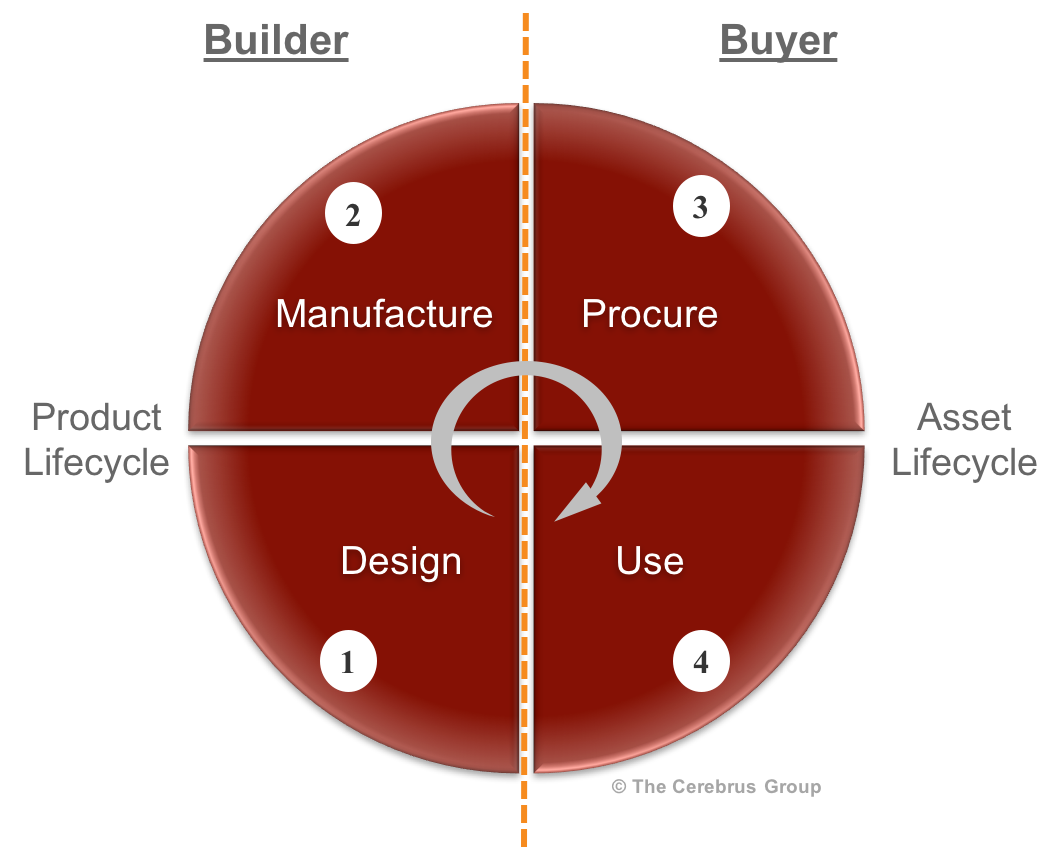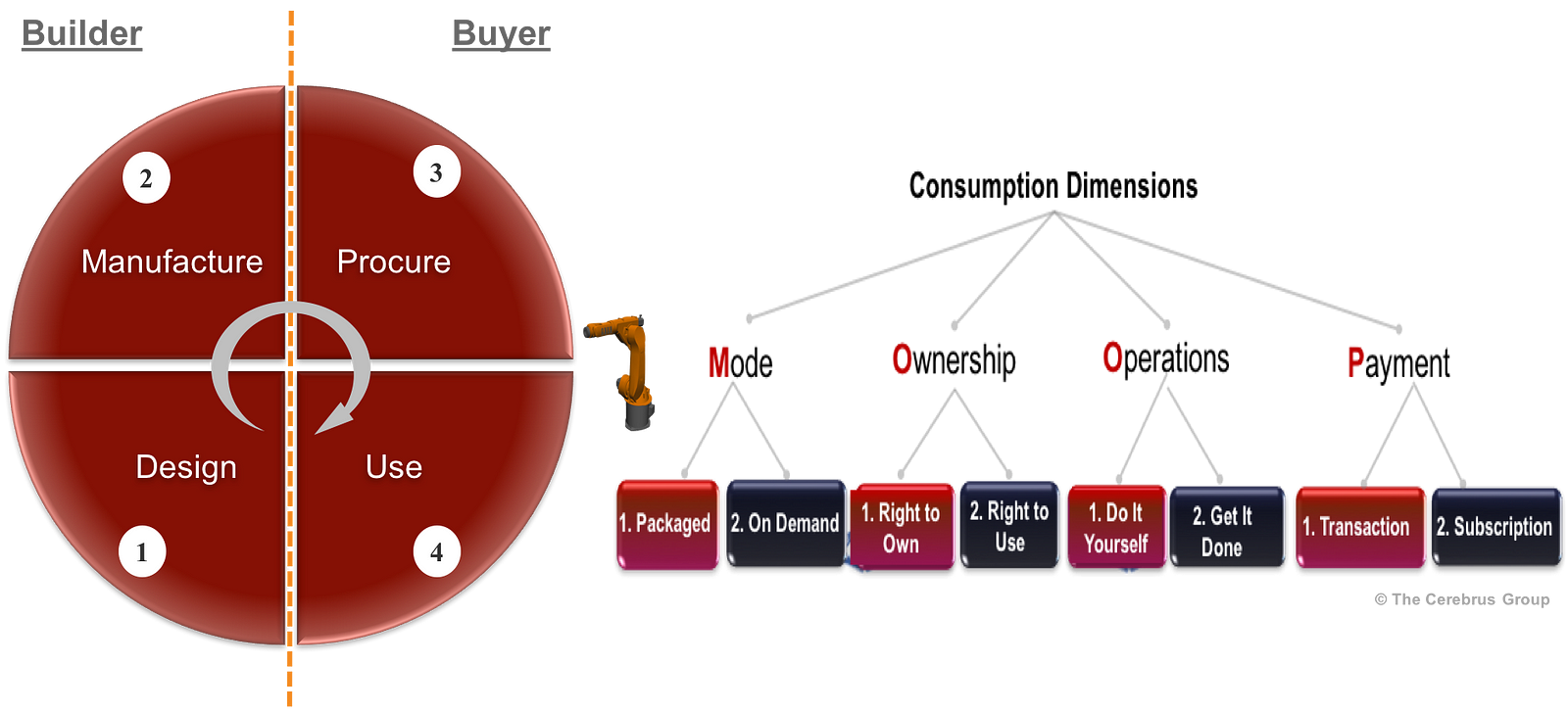Digitizing a Thing's Life: Part 3 – Consumption
Digitizing a Thing's Life: Part 3 – Consumption
- Last Updated: December 2, 2024
Hari Harikrishnan
- Last Updated: December 2, 2024



New ways of consuming products alters the entire Thing Lifecycle — from product design to asset operations, not just the making an Internet of Things product.
We saw in previous articles in this series on digitization of a physical thing how the four stages of a thing’s lifecycle is impacted (Part 1), and how the production side of a thing’s life is impacted (Part 2).
In Part 3, we will examine the consumption side of the thing lifecycle — the procurement and use of an asset by the buyer.

Image Credit: The Cerebrus Group
Consuming a Digitized Thing
Consumption preferences of customers are changing in B2B and B2C markets. Consumption goes beyond user experience (UX) or industrial design (ID). It is about the overall asset lifecycle experience for the buyers.
For example, assets may be consumed on-demand, operated by third parties or vendors, and paid for via transactions or subscriptions. As the buyer, operator, and user interacts with the product and its maker – from procurement to use to decommissioning – asset operations change.
The graphic below illustrates four primary dimensions of consumption — mode, ownership, operations, and payment — and their variants, on how an asset can be procured and used.

Image Credit: The Cerebrus Group
For example, a traditional car purchase follows this consumption pattern: Mode 1 (we package it), Ownership 1 (we own it), Operations 1 (we drive it), Payment 1 (we pay for it as a one-time transaction). This example is a M1-O1-O1-P1 pattern. This is similar to buying license to packaged software.
On the other hand, using a ride-sharing service follows a M2-O2-O2-P1 pattern since we use it on-demand, without owning or driving it, and we pay per usage. Similarly, Software-as-a-Service (SaaS) normally follows a M2-O2-O2-P2 pattern.
Consumption Influences Design
Cars are beginning to get consumed differently via fleet operators and 3rd party drivers in a ride-sharing world. This is a prime example of consumption change.
Catering to these consumption patterns drives new product requirements as traditional assumptions of owner, operator, and user personas change.
Functional requirements of smart and connected devices require obvious design changes. However the subtle product changes needed to accommodate fleet operators and split-roles between drivers and passengers is forcing a design rethink.
Whose tastes, convenience, and economic considerations should the car maker cater to? It is not as simple as typical demographics and psychographics of the consumer.
Consumption Ecosystem Impact
Digitization of the thing lifecycle has an impact on all the ecosystem players involved in the thing’s life. Here is a brief look at a few of them.
Buyers: Thing Consumers
As ownership, operations, and payment for the asset changes, buyers have more core vs. context decisions to make on operational decisions and personnel. They also have capital expense vs. operating expense (capex vs. opex) decisions to make. Opportunities to align costs to revenues is significant in the asset-as-a-service world.
Financial Services Firms
When assets are no longer purchased as capital goods, how should financing change? How does accounting change? How do leases change? How does insurance and re-insurance change?
Product liability in an autonomous world gets shared differently between manufacturer and operator. Warranty accounting in a connected-asset economy that teems with big data gets more precise. Can it bridge the gap between accruals of warranty liability and actuals? What does warranty mean in an ‘as-a-service’ world anyway?
The implications are far-reaching.
Service and Solution Providers
Professional services providers of all shapes and forms, from consulting to systems integration to managed and support service providers are already adapting to a connected-asset world as part of the IoT wave.
Beyond monitoring and managing assets, will they shift their business models too? How will they blend the skillsets across IT and OT to effect business outcomes?
Digitizing the thing lifecycle calls for collaboration across technology and business services providers. A new world of channel ecosystem collaboration is emerging.

Summary
Production and consumption of a physical thing is influenced by new ways of designing, manufacturing, owning, paying, operating, and using smart and connected products. Innovating requires a lifecycle approach to digitizing physical things — things as products and things as assets.
New modes of consumption changes how assets are owned, operated, and paid for. Consumption models fundamentally alter product design in ways we are just starting to adapt to.
The thing consumption ecosystem of financial intermediaries, software makers, and services and solution providers is adapting. Collaboration between IT and OT players across the thing lifecycle is countered by competition to mark new territory as boundaries shift.
Welcome to the new thing's life.
The Most Comprehensive IoT Newsletter for Enterprises
Showcasing the highest-quality content, resources, news, and insights from the world of the Internet of Things. Subscribe to remain informed and up-to-date.
New Podcast Episode

How Drones and Telecom Enable Aerial IoT
Related Articles


